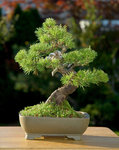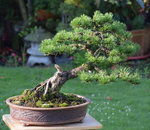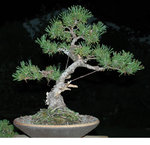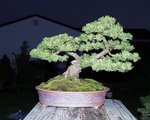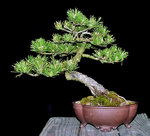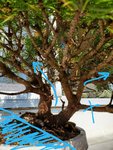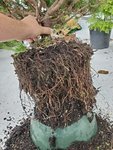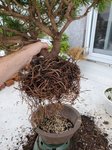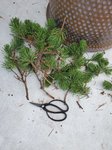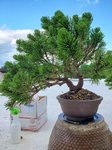Woodblock77
Seedling
- Messages
- 19
- Reaction score
- 13
Hi all,
I acquired this mugo pine from somebody late last fall. I got it because it was cheap and I wanted a pine, but after looking at it, styling could be troublesome. I know it's not great material. I am looking for advice on how I could turn this into a bonsai. The two trunks are connected at the base, which is very wide, and it appears that there was a third trunk at some point which was chopped off. The candles have never been trimmed back which is unfortunate. The good news is that the tree is vigorous, some branches have begun to back-bud, the roots are healthy and ready for a new pot. What might I do with this? I'll be trimming it up soon. Should I leave it as a unique twin trunk, or lob one off and start anew? I really appreciate any help from those with more experience and knowledge.



I acquired this mugo pine from somebody late last fall. I got it because it was cheap and I wanted a pine, but after looking at it, styling could be troublesome. I know it's not great material. I am looking for advice on how I could turn this into a bonsai. The two trunks are connected at the base, which is very wide, and it appears that there was a third trunk at some point which was chopped off. The candles have never been trimmed back which is unfortunate. The good news is that the tree is vigorous, some branches have begun to back-bud, the roots are healthy and ready for a new pot. What might I do with this? I'll be trimming it up soon. Should I leave it as a unique twin trunk, or lob one off and start anew? I really appreciate any help from those with more experience and knowledge.





